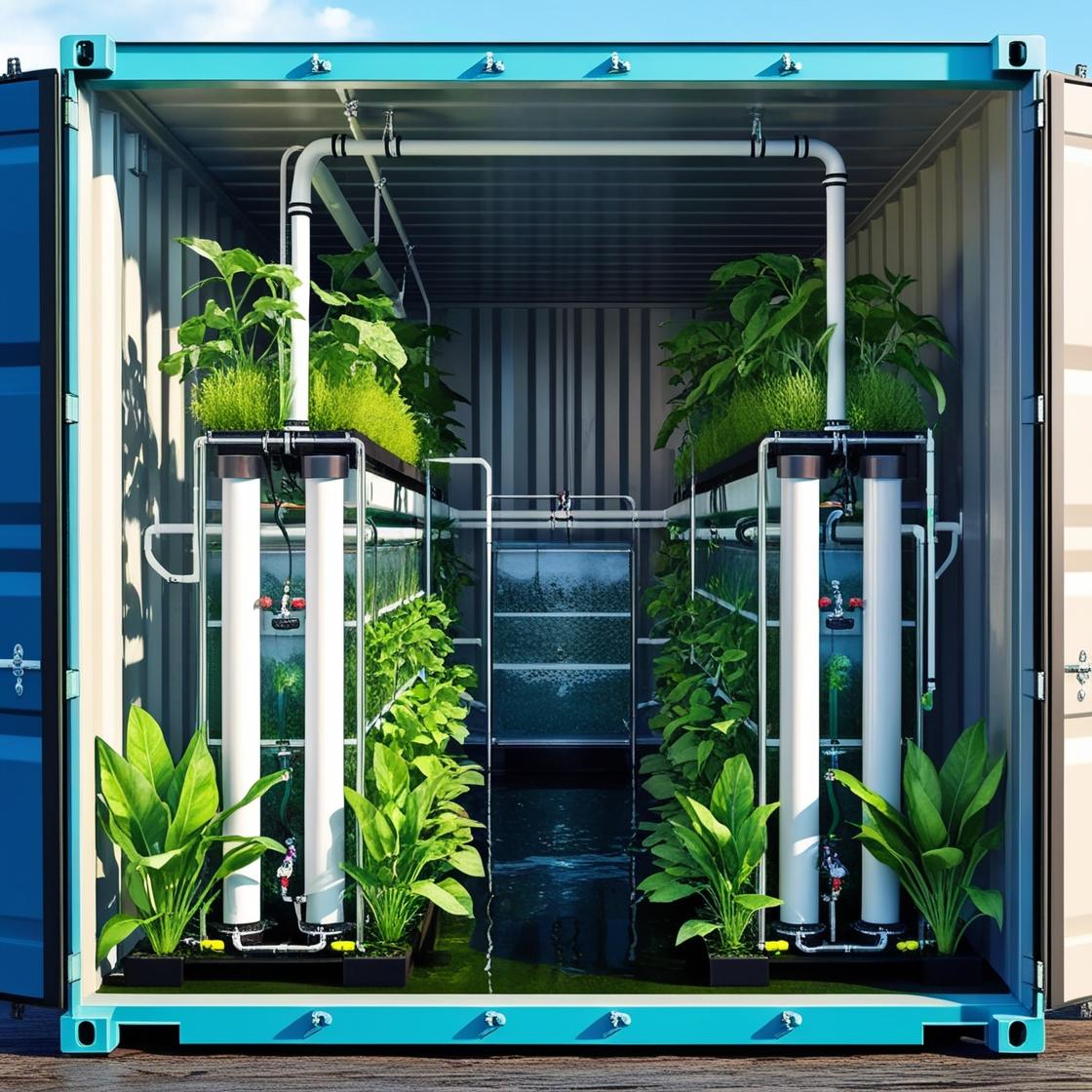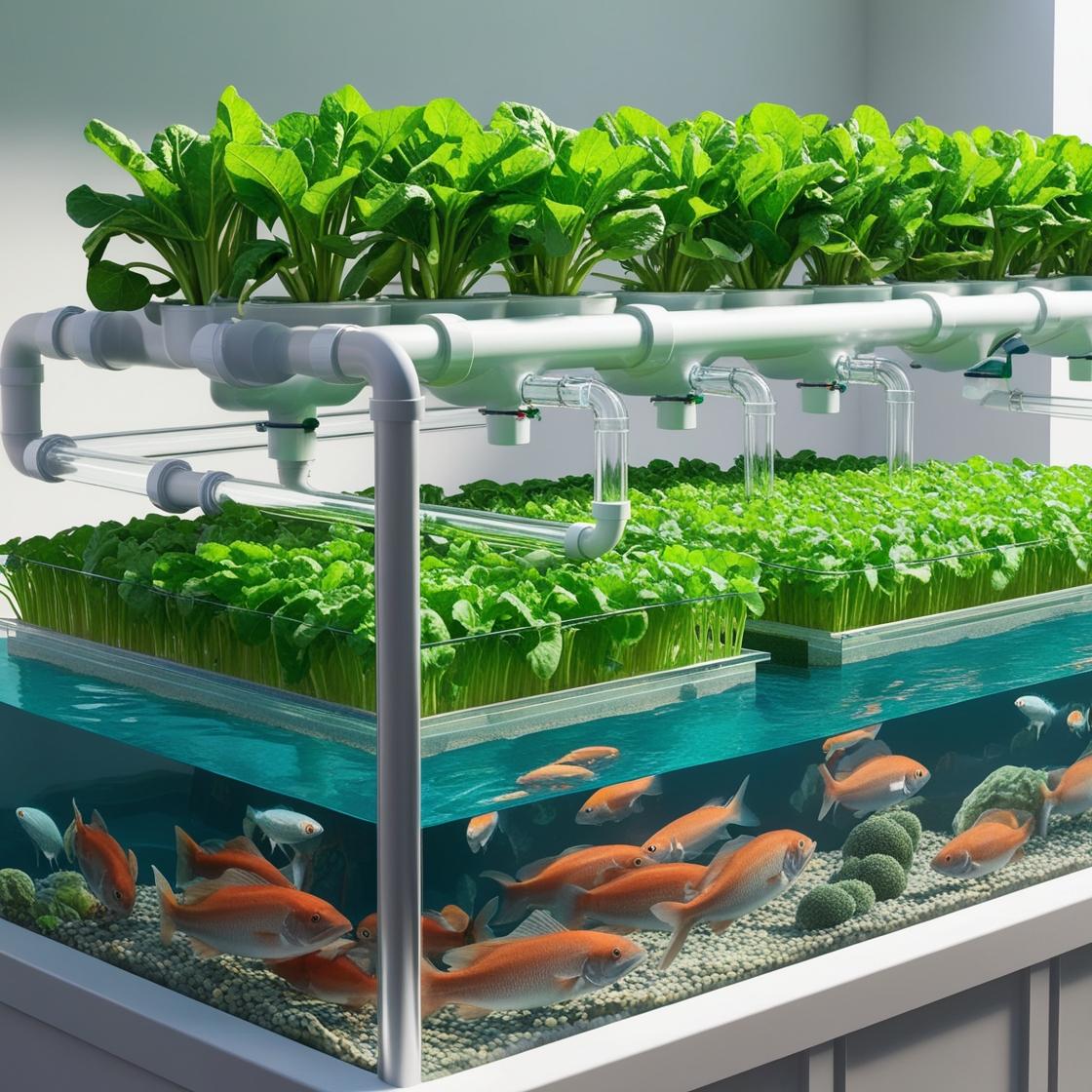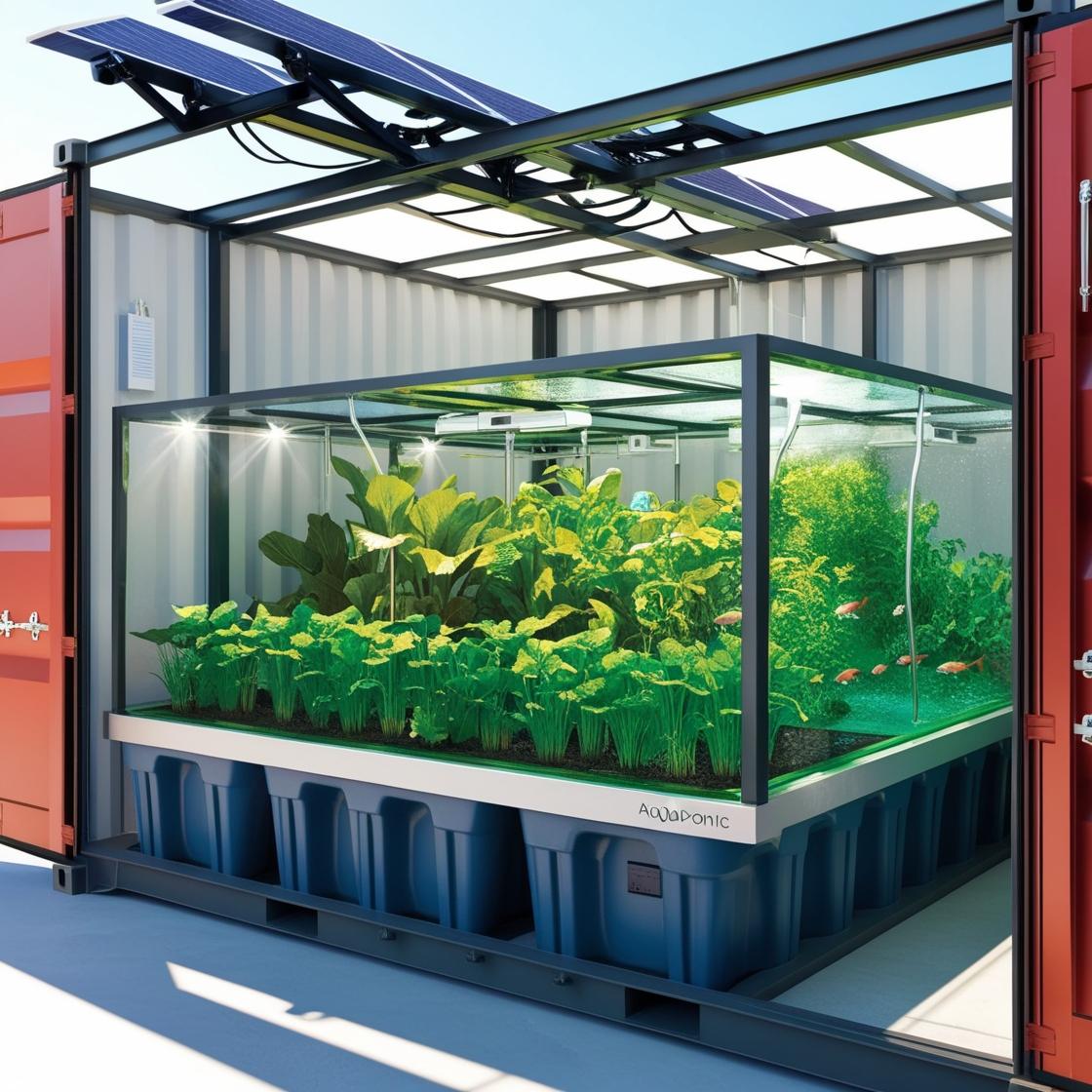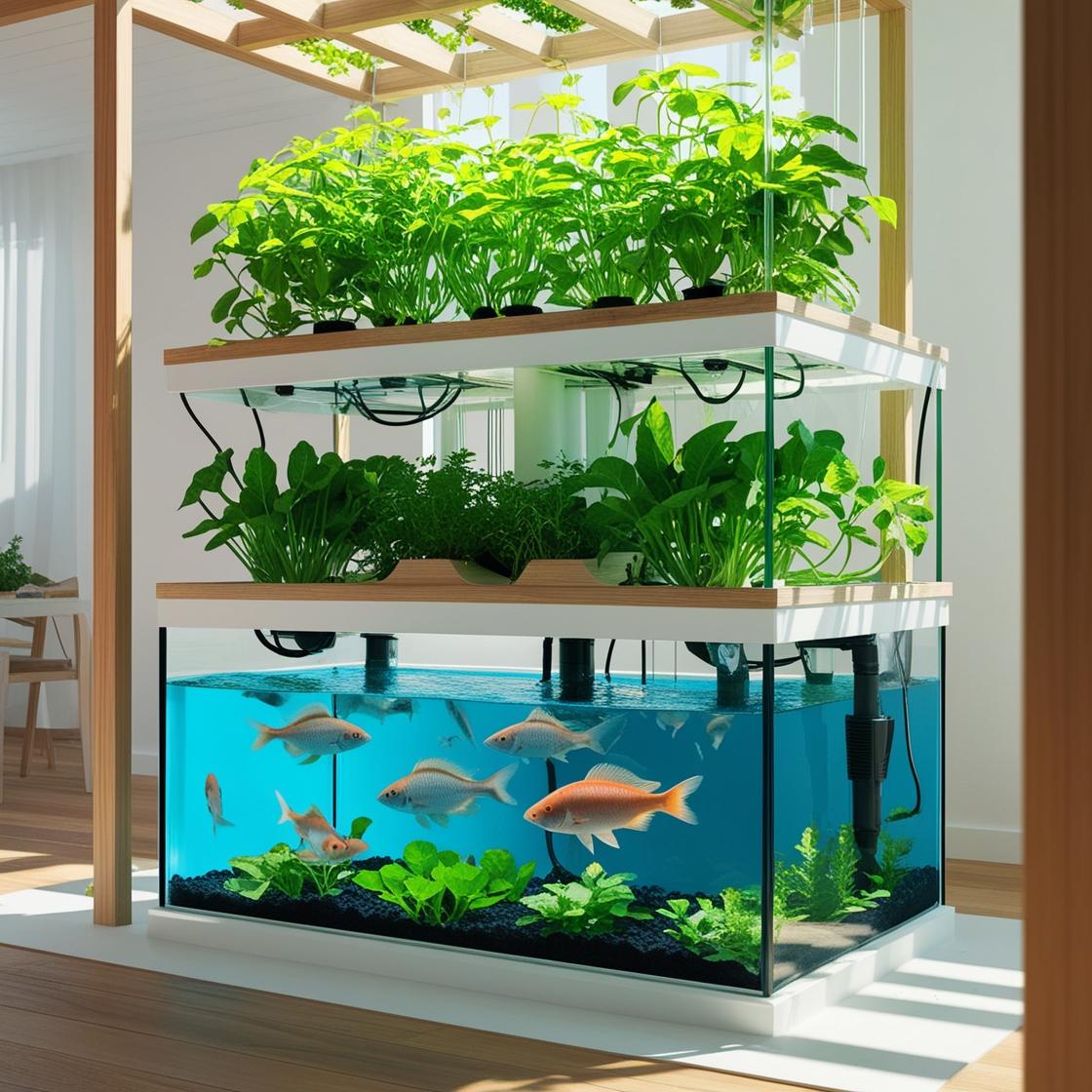Embrace Eco-Friendly Living with Homegrown Fish and Plants
Grow Fresh, Sustainable Food Year-Round with Aquaponics
Create a Thriving Food Ecosystem in Your Home with Aquaponics – Sustainable, Space-Saving, and Fresh
What is an Aquaponics System
Aquaponics is a sustainable food production system that combines aquaculture (raising fish) with hydroponics (growing plants in water rather than soil). It creates a symbiotic ecosystem where fish and plants benefit each other, making it an ideal solution for families in a 4Ever Home who value sustainability, food security, and self-sufficiency.
Water Conservation
Sustainable Food Production
Environmental Benefits
Discover the Science Behind Aquaponics System
How Aquaponics Works
How it works?
The Components:
- Fish Tank: Home to fish, which produce waste rich in nutrients.
- Grow Beds: Where plants are cultivated in soilless media (e.g., gravel, clay pellets) or floating on water.
- Water Circulation System: Pumps and filters that move water between the fish tank and the grow beds.
- Bacteria: Beneficial bacteria in the system break down fish waste into nutrients plants can absorb.
The Process:
- Fish Waste as Nutrients:
- Fish produce waste (ammonia) as they eat and grow.
- Beneficial bacteria convert ammonia into nitrites and then into nitrates, which are excellent nutrients for plants.
- Plant Absorption:
- Plants absorb these nutrients through their roots, cleaning the water as they grow.
- Water Filtration and Recirculation:
- The cleaned water is recirculated back into the fish tank, maintaining a healthy environment for the fish.
Closed-Loop System:
- Aquaponics is a closed-loop system, meaning resources like water and nutrients are reused efficiently, minimizing waste and external inputs.

Discover the Benefits of Aquaponics System
Benefits of Aquaponics for a Family’s 4Ever Home
Sustainable Food Production:
- Families can produce both fresh vegetables and fish for consumption in a single system.
- It eliminates the need for chemical fertilizers and pesticides, as the system relies on natural nutrient cycles.
Efficient Use of Space:
- Aquaponics systems can be set up indoors, on rooftops, or in small yards, making them ideal for compact living spaces like a 4Ever Home.
- Vertical setups maximize productivity in limited areas.
Water Conservation:
- Aquaponics uses up to 90% less water than traditional farming, as water is continuously recycled within the system.
- This is particularly beneficial in areas with limited water resources or drought conditions.
Year-Round Food Supply:
- Aquaponics systems can be operated indoors with climate control and grow lights, allowing for year-round production of food regardless of weather or seasons.
Nutritional and Economic Value:
- Families can enjoy fresh, organic, and highly nutritious food produced at home.
- Reduces grocery bills by providing a steady supply of vegetables and fish like tilapia, trout, or catfish.
Low Maintenance:
- Once set up, aquaponics systems require minimal maintenance, as the ecosystem largely self-regulates.
- Families can monitor the system using smart sensors for water quality and nutrient levels.
Environmental Benefits:
- Reduces reliance on industrial agriculture, which often involves heavy land use, water waste, and chemical runoff.
- By growing food locally, aquaponics reduces the carbon footprint associated with transporting produce and fish from farms to homes.
Educational and Therapeutic Value:
- Maintaining an aquaponics system teaches families about sustainability, biology, and food production.
- The calming nature of tending to plants and fish can be a source of stress relief and family bonding.
Resilience Against Food Insecurity:
- Families in remote or rural areas can produce their own food, reducing dependency on external food supply chains.
- This aligns with the 4Ever Home’s goal of promoting self-sufficiency and food security.
Customizable to Needs:
- Systems can be scaled up or down to meet the specific food needs of a family, from small tabletop units to larger setups capable of producing surplus food.

Example of Aquaponics in a 4Ever Home
Example of Aquaponics
- A 200-gallon fish tank in their indoor agriculture room.
- Vertical grow beds for leafy greens, tomatoes, and herbs, placed near a window with natural light.
- An automated pump and filter system to maintain water circulation.
- The family raises tilapia in the tank, feeding them with sustainable fish feed.
- Waste from the fish nourishes plants growing in the beds, producing a continuous supply of fresh vegetables.
- Clean water cycles back to the fish tank, creating a balanced, low-maintenance system.
.

- Locally Grown Food:
-
- Families in areas with limited access to fresh produce can grow food on-site, reducing transportation costs and reliance on distant suppliers.
-
- Cultural Reconnection:
-
- Indigenous communities can use aquaponics to grow traditional plants and foods, preserving cultural practices while adopting modern sustainable technologies.
-
- Empowerment Through Sustainability:
-
- Aquaponics systems foster self-reliance and resilience, particularly in regions facing food security challenges.
-

Conclusion
Aquaponics systems offer 4Ever Homes an efficient, sustainable, and cost-effective way to produce fresh food year-round. By combining fish farming and plant cultivation in a single system, aquaponics supports the PFWCES mission of creating environmentally friendly, self-sufficient living solutions. Families benefit from healthier diets, reduced costs, and a closer connection to the natural cycles of food production.
